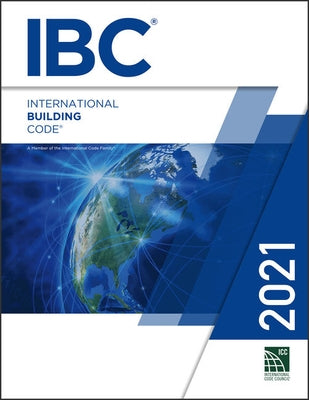International Code Council
2021 International Building Code
2021 International Building Code
Couldn't load pickup availability
This code applies to all buildings except detached one- and two-family dwellings and townhouses up to three stories.
The 2021 IBC contains many important changes such as Puzzle rooms (escape rooms) are now defined and regulated as special amusement areas, requiring compliance with Section 411 and special means of egress requirements.
For the purposes of determining the allowable number of control areas in a building, each portion separated by one or more firewalls is now considered a separate building.
In Group E occupancies, enhanced classroom acoustics in compliance with ICC A117.1 are to be provided in all classrooms having a volume of 20,000 cubic feet or less.
The requirements for metal composite materials and systems (MCM) installed on the exterior walls of Types I, II, III, and IV construction were simplified and sprinkler allowances were deleted.
The use of intermodal shipping containers as buildings is now specifically addressed through provisions intended to supplement existing applicable IBC requirements.
Automatic sprinkler protection is now required in Group S-2 open parking garages where any fire area exceeds 48,000 square feet. The 2017 edition of ICC A117.1 was adopted.
Parapets of a minimum height are now required for aggregate-surfaced roofs to prevent blow-off. Mixed occupancy buildings with assembly spaces are placed in Risk Category III when the total public assembly occupant load is greater than 2500 people.
The 2021 IBC snow map is updated to match ASCE 7-16 snow maps by adding a reference to ASCE 7 snow tables in states with large case study areas. Secondary rain loads are updated to be consistent with ASCE 7.
Author: International Code Council
Publisher: International Code Council
Published: 11/01/2020
Pages: 1
Binding Type: Paperback
Weight: 4.10lbs
Size: 10.90h x 8.50w x 1.70d
ISBN: 9781609839550
About the Author
International Code Council: - ICC is a leading organization dedicated to developing a single set of comprehensive, coordinated national model construction codes. To date, 48 U.S. states have adopted various international codes from the ICC.
Share


